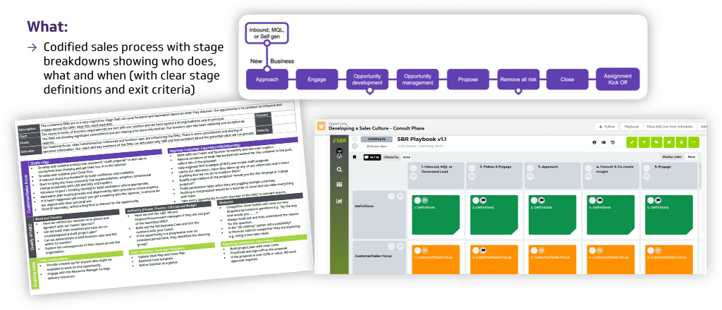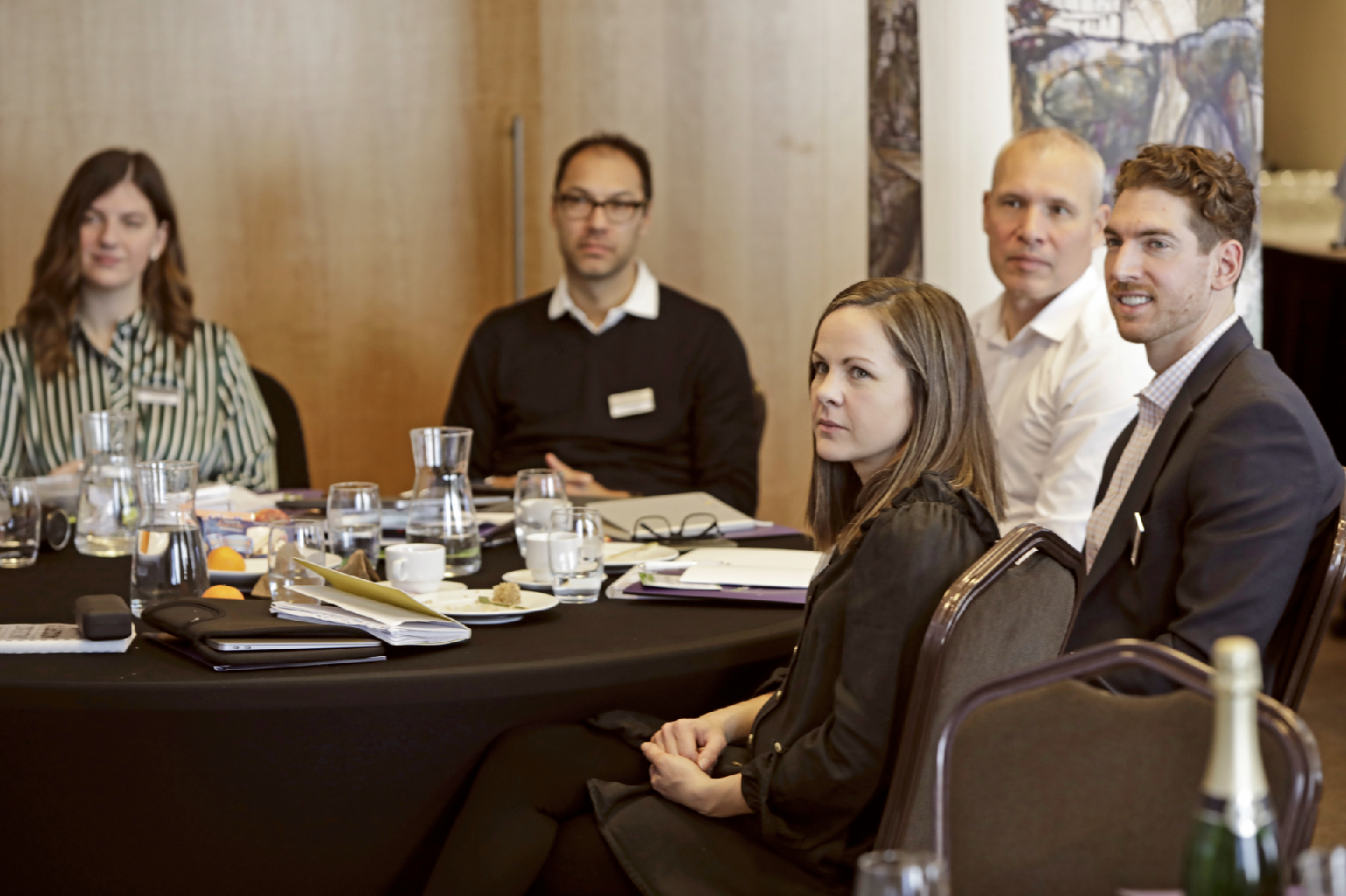
High performance habits
Building a sustainable growth engine in your consultancy
10 min read
Generate a sustainable flow of new projects, even in a challenging, volatile economic environment
After working with more than 350 professional services firms over the last 22 years, it’s become clear that business development is often not a priority for consultants.
Securing new projects falls to one or two senior members (and the rest of the team are happy to leave them to it) or are the result of reactive referrals and recommendations.
However, when you are reliant on select individuals, and word of mouth, you are putting yourself in a perilous position and materially reducing the value of your business.
A single point of failure
What happens if the rainmakers that bring in most of the business get a better offer from a competitor, set up on their own, or go on long-term leave?
While it’s great that reactive referrals from successful projects lead to new clients, how much control do you have over that process? Can you accurately forecast how many consultancy projects you are likely to land over the next quarter and what that looks like in revenue?
Only 19% of consultancy firms have a standard approach to business development.
If the above sounds a lot like your consultancy firm, then don’t feel you are an industry exception. Research conducted by the Consultancy Growth Network reveals that almost half of firms (48%) don’t actively seek out new business, while just 19% have a sales process that they regularly invest in and improve.

Make revenue generation more predictable
Let’s take a look at a simple framework that will help you bring in a steady flow of business. As well as drawing on our decades of experience working with consultancies, we’ll also include insights from Dom Moorhouse, Growth Expert at the Consultancy Growth Network and founder of Method Grid. Dom has 25 years of experience in building high-performing consulting businesses and we had the pleasure of working with him as he built Moorhouse Consulting.
We will cover 7 workstreams that give you greater control over business development, in a way that demystifies and democratises sales so that your people don’t feel that they’re being forced to become a caricatured “salesperson”. We recognise that, for many, this carries many uncomfortable associations and is far from the culture that most consultancy leaders want to build.
1. Set clear objectives and establish the activity required to achieve them
Begin by calculating your revenue goals for the year or quarter. Then establish how many projects you need to achieve this goal.
Based on past performance, calculate how many proposals you need to submit to land a project and how many meetings result in an invitation to tender. Finally, you need to work out how many organisations you need to reach out to secure these meetings.
For example, it could be that 50 calls a week (or 4 networking events a month) result in 10 meetings, which result in 3 proposals, which result in landing 1 new project every quarter, which is what you need to meet your revenue targets.
It’s critical to identify these targets and establish accountability. This will ensure each member of the team knows what their roles and targets are and how each activity feeds into landing a new client.
It’s also necessary to involve everyone in this process to democratise implementation and ensure everyone is engaged.

2. Create a sales toolbox that’s simple but effective
What do we mean by a sales toolbox? This is essentially a step-by-step process and methodology that describes what needs to be done and when, and shows how you take prospects on the journey from initial contact to become retained clients. Ideally, this should be built from a combination of insights gathered from examining the wins that you would like to replicate and external best practices that are relevant to your organisation.
A codified process will help to ensure a consistent approach and enable collaboration – teams win deals! It’s extremely important to establish this journey from the client’s perspective. A clear understanding of the buyer’s process should precede the sales process, and the sales process should precede the configuration of the CRM.
Over the last 21 years, we’ve helped over 150 professional services and consulting clients adapt our consultative sales methodology QUIS (Question, Understand, Influence and Solidify) to their context. Among other things, this methodology enables them to adapt and apply many of the core skills that underpin excellence in programme delivery to originating and winning work. The combination of process and methodology provides the guidelines necessary to progress opportunities effectively to close, maximising sales volume, value and velocity.
Don’t just adopt someone else’s playbook. Your playbook should reflect your specific context, culture and people, in the language and with the imagery that you and your customers use. Self-authorship is key – if your team has helped create the toolbox, then they are more likely to adopt it.

3. It’s not just a numbers game; it’s a ratio game
The next step is embedding a sales heartbeat into your consultancy. This is where management information is key and relates back to the ratios we discussed earlier.
You need to establish the information you want to monitor and design dashboards and reports that provide you and your leadership colleagues with the right data.
Put simply, whether it’s your lead consultants or a designated resource making those outreach calls, are they hitting their targets? If so, is this resulting in the ratio of meetings you’d expect?
This will help you identify where you need to introduce extra coaching and support. It also means you can identify the tactics and approaches that are particularly effective and then share them with the rest of the team.
You also need to establish how often you need to meet as a team to ensure the process is running smoothly and everyone is in the loop with the sales cycle. This might be fortnightly catch-ups with the team and a monthly report with the senior leadership team.
Consider who attends these meetings, how regularly they take place, and what will be covered.
Of course, you don’t want to micro-manage unnecessarily. However, in our view, visibility creates accountability, and accountability creates results. The more you can measure your inputs, across the sales cycle, the more you can refine and improve sales performance.
4. Let sales collateral do some of the work for you
Help those who are engaging in sales conversations be effective by developing content that demonstrates your expertise and previous successes. Good sales collateral will influence every aspect of the sales journey – from generating more leads to improving conversion to reducing the sales cycle. Collateral can include everything from case studies and testimonials to thought leadership pieces.
Whether you create blogs, white papers, webinars, or videos, this content highlights your experience and expertise, and addresses any early objections – establishing credibility and improving the buying environment.
At the very least, you should review your website, which is your digital shop window. Does it clearly explain your value proposition and differentiate your business in the marketplace?
This shouldn’t be a “one and done” approach.
You should be constantly refining your process and, using management information, identifying where extra support is required. This may be from a process or individual perspective, and your organisation should provide that coaching on a regular basis – not just an annual one-day sales workshop.
5. Change the mindset and build confidence
Once you’ve established your sales framework, it’s time to get your team selling. But even with all the previous steps in place, you can’t expect every consultant to dive straight in.
Some will feel a lot more confident about this new approach than others. So, the most important thing to change is often the collective sales attitude, “the voice within”.
It’s not just about educating your team in the technical process of selling – it’s about helping them develop a different mindset.
This is often where expert external facilitators are most valuable. Someone with proven experience in the consultancy sector who understands the intricacies of the industry you operate in can help you make significant strides.
This shouldn’t be a “one and done” approach.
You should be constantly refining your process and, using management information, identifying where extra support is required. This may be from a process or individual perspective, and your organisation should provide that coaching on a regular basis – not just an annual one-day sales workshop.
6. Keep the team motivated (not just with financial rewards)
Recognition and reward are key to driving the right behaviours, but this needs to be based on a clear understanding of consultants in general and your people specifically.
This comes back to the principles we mentioned above – sales is a team game. Creating clear targets for every aspect of the sales cycle (“the inputs”) means everyone knows what they need to achieve and what the rewards are for meeting and exceeding these targets.
However, while sales bonuses are clearly an incentive, an emphasis on career progression can be equally motivating.
Building a competency framework so staff can see a clear path of progression within your firm, and explaining the expectations at each level, helps fuel ambition and progression. Do your team know that they are expected to create opportunities, and is the ability to win or extend work recognised as a key factor in career progression?
7. Adopt the right tech stack to help you meet your objectives
It goes without saying that implementing the right technology will help you improve productivity and assess performance across your team.
With the right tech stack (and by monitoring the right metrics so that you can make data-driven decisions), you can manage your sales pipeline and track leads, deals and customer interactions. Furthermore, you can also improve productivity by automating repetitive tasks, such as sending follow-up e-mails or scheduling meetings.
As we mentioned earlier – this has to happen in the right order. We’ve lost track of the number of organisations who have blamed their CRM for poor sales performance when the root cause is that they’ve never stepped back and codified the sales process. They can’t correctly configure the system until they have a process that’s relevant to their target clients. The tail should never wag the dog!
In summary
Ultimately, a sustainable, scalable business needs a high-performing sales engine, not just a couple of deal-makers and some luck. This means that the whole team must understand what they need to do and how to do it – and have the confidence and motivation to execute successfully.
We’ve helped many professional services businesses along their sales transformation journey. To discover more, let’s talk growth.





